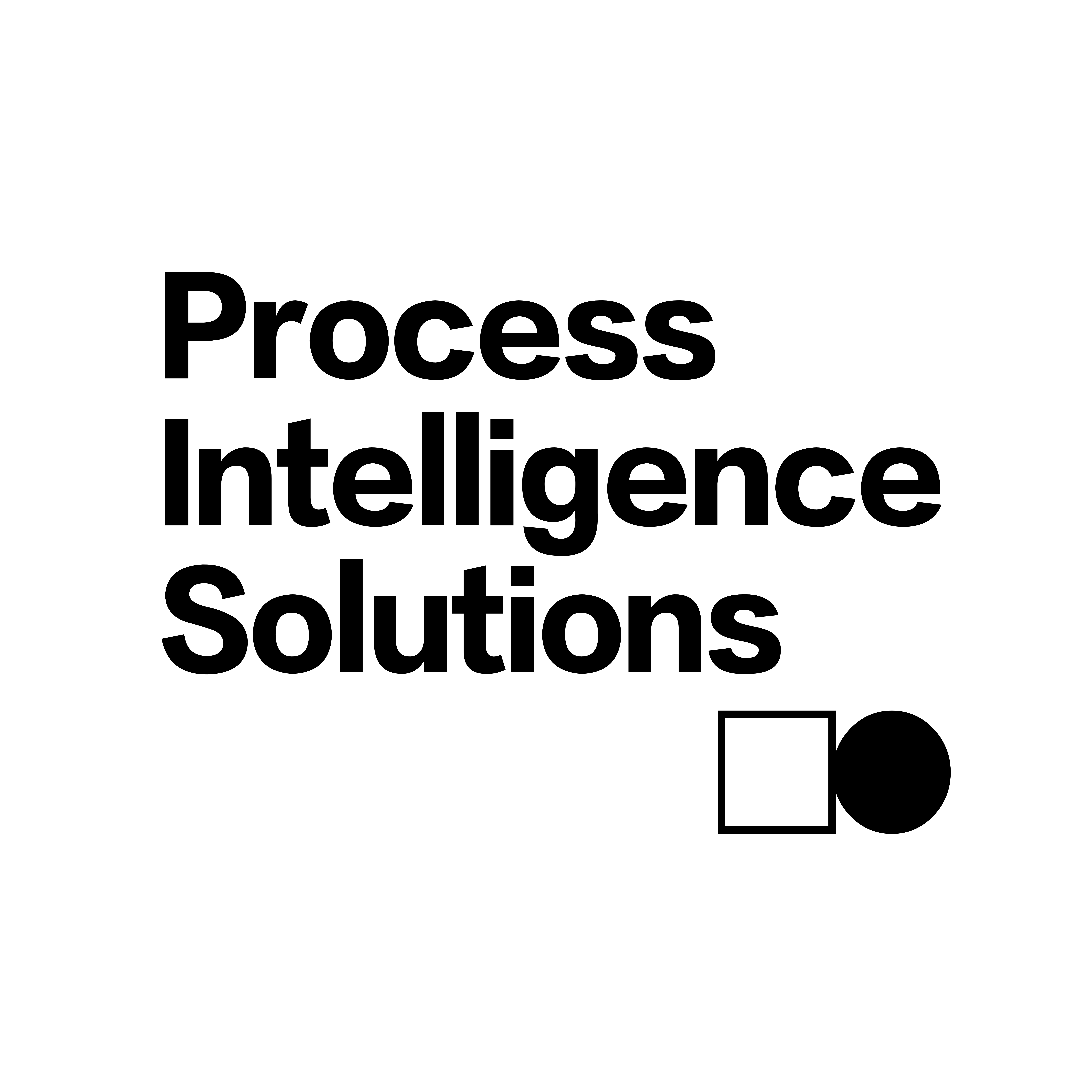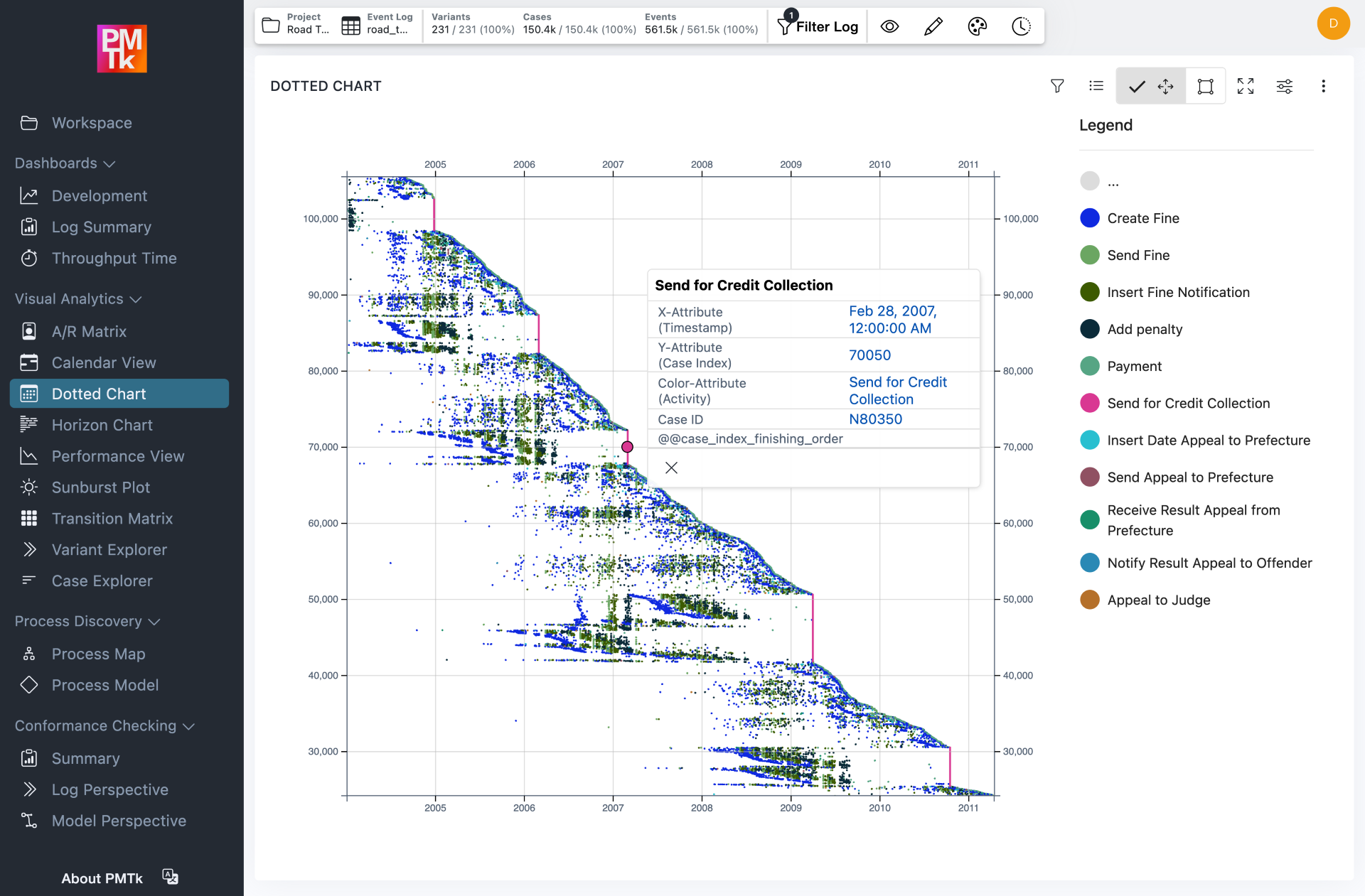Developer’s point: Process Intelligence Solutions
academic stories developers point end-users cornerA chat with Daniel Schuster
Recently, we had the opportunity to have a chat with Daniel Schuster, managing director at Process Intelligence Solutions, and observe process mining in his particular view, spanning academic research and industrial innovation.
Tell us a bit about yourself!
 Thanks for having me-it’s a pleasure to be part of this interview.
Thanks for having me-it’s a pleasure to be part of this interview.
I’m Daniel. I studied Computer Science as well as Management, Business, and Economics at RWTH Aachen University. During my studies, I developed a strong interest in process mining, eventually leading me to join Fraunhofer FIT, where I spent over five years as part of the process mining research group.
During that time, we have been developing PM4Py, an open-source process mining library that many researchers in the field have likely already used-whether for testing new algorithms, building experimental setups, or exploring new ideas. Over time, it also gained traction in the industry, and today, more and more companies are integrating PM4Py into their products and solutions. The growing interest in our work eventually led to the founding of Process Intelligence Solutions (PIS), a Fraunhofer spin-off where I now serve as managing director. At PIS, we continue to develop PM4Py along with PMTk (Process Mining Toolkit), with a focus on turning research-driven tools into production-ready software solutions. We’re also proud to be one of the few companies in the process mining space that follow a fundamental open-source strategy-promoting transparency, accessibility, and innovation for both academia and industry.
It’s been a very rewarding journey-seeing something that started in a research lab evolve into technology that’s used by people and companies around the world.
When and why did you first come up with the idea to do research in process mining?
 I first got involved in process mining during my master’s thesis at the Chair of Process and Data Science at RWTH Aachen University, where I had the chance to work closely with Wil van der Aalst. Initially, I planned to enter the industry right after completing my studies, but as I started working on my thesis, I became fascinated by the topic and the research opportunities within process mining.
I first got involved in process mining during my master’s thesis at the Chair of Process and Data Science at RWTH Aachen University, where I had the chance to work closely with Wil van der Aalst. Initially, I planned to enter the industry right after completing my studies, but as I started working on my thesis, I became fascinated by the topic and the research opportunities within process mining.
The more I delved into it, the more I realized how impactful this field could be-not only in terms of improving business processes but also as an area with plenty of potential for innovation. The combination of process and data science felt like the perfect fit for my skills and interests, and I quickly found myself drawn to the idea of continuing in academia to explore these concepts further.
Looking back, pursuing a PhD was definitely the right choice-it gave me the chance to really dive deep into the subject and think creatively about how to apply process mining in new and valuable ways.
What is your favorite "Eureka!" moment you had while conducting your research?
During my time at Fraunhofer, where I worked throughout my PhD journey, I had frequent interactions with various industry partners through different projects. One moment that stands out was when we presented early prototypes of Cortado, an open-source software tool I developed as part of my research. It was really rewarding to see the interest and positive feedback from the industry partners as they interacted with the prototype.
What made it particularly meaningful was that it wasn’t just about the tool itself-it was about seeing that the research had tangible value. It was encouraging to hear from industry partners that the work we were doing was not only understandable but also applicable in real-world scenarios. That feedback was a strong reminder of why I was doing the research in the first place: to create something that could bridge the gap between academia and industry and have a practical impact. It was motivating to see that the effort was not only appreciated but also considered valuable in a practical sense.
What are the investigations in process mining that you have been mostly devoted to? What do you see as major challenging and attractive factors in process mining?
My research has primarily focused on incremental process discovery, as detailed in my PhD thesis. Traditional process discovery methods are fully automated, where an event log is used as input and a process model is automatically generated. Incremental process discovery, however, involves the user throughout the process. The user can apply domain knowledge and interact with the discovery algorithm to guide and refine the model as it evolves. Incremental process discovery creates a hybrid intelligence framework, combining human expertise with the power of automation. It is one of the first approaches to blend manual process modeling with automated process discovery, allowing for more accurate models.
As for the major challenging and attractive factor in process mining, I would say it’s the balance between automation and human involvement. While fully automated methods are efficient and scalable, there is still a need for human insight, particularly when dealing with complex or nuanced real-world processes. The challenge lies in incorporating human expertise effectively without compromising the efficiency of automated discovery. This balance, coupled with the potential of hybrid intelligence, is what makes process mining both challenging and exciting.
A known challenge with process mining is value realization. In your view, how can process mining results lead to change?
I think this is a very important and valid point. From my perspective, it’s essential to always understand and consider the business context of the processes for which we develop new approaches, techniques, and algorithms. What may seem interesting from a purely data-driven perspective might not necessarily translate into something meaningful or valuable from a business standpoint.
At times, I feel that as researchers, we develop approaches and ideas that, while fascinating, may not always be directly applicable to real-world scenarios. That’s not necessarily a problem-academic research often sparks new ideas that can eventually lead to practical solutions. However, there might be value in focusing more on realistic use cases and challenges that businesses face. This can help ensure that the insights we generate are actionable and drive real change.
In my experience working with industry, I’ve seen that often the simplest insights that emerge from analyzing event data-those small, obvious things-can lead to the most significant improvements for businesses. For example, process discovery, a core area of process mining, is still underrepresented in many commercial process mining tools and often remains limited to DFG-like representations, which have clear limitations. This reflects the gap between advanced research techniques and the tools used in industry.
That said, I’m optimistic. While many of the more complex and cutting-edge approaches might not yet have made their way into widespread industry use, I believe the time will come when these advanced techniques will find their place.

How do you see process mining in the future?
Process mining has firmly established itself as a recognized discipline, both in academia and in industry. Looking ahead, I believe we’ll continue to see strong growth and diversification in how it’s applied. One trend I notice is that organizations are becoming increasingly thoughtful about the technologies they adopt-especially when it comes to avoiding vendor lock-in. There’s a growing interest in open and flexible architectures, which allow companies to integrate process mining more deeply into their existing infrastructure and retain full control over their data and solutions.
Another shift I observe is the demand for on-premise or offline capabilities. While cloud-based SaaS platforms remain common, certain sectors-particularly those with strict regulatory or security requirements-often seek solutions that can run independently of external infrastructure. At PIS, we’ve seen this need come up frequently and have focused on supporting exactly these kinds of setups through open-source technologies and flexible deployment options.
From a technical and research perspective, I think we’re at the beginning of a very exciting phase. With advances in AI and automation, I expect that process mining will become more and more autonomous. We might see intelligent agents that can conduct process analyses with minimal human guidance-selecting the right techniques, running the analyses, and even interpreting the results in a meaningful way.
It’s an ambitious vision, but one that seems increasingly realistic. Exciting times ahead!
Some reference points to keep in touch?
Find me on LinkedIn, and read more about Process Intelligence Solutions (PIS) at https://processintelligence.solutions.

- This article has been updated on August 25 2025, 11:53.
- A chat with Daniel Schuster

